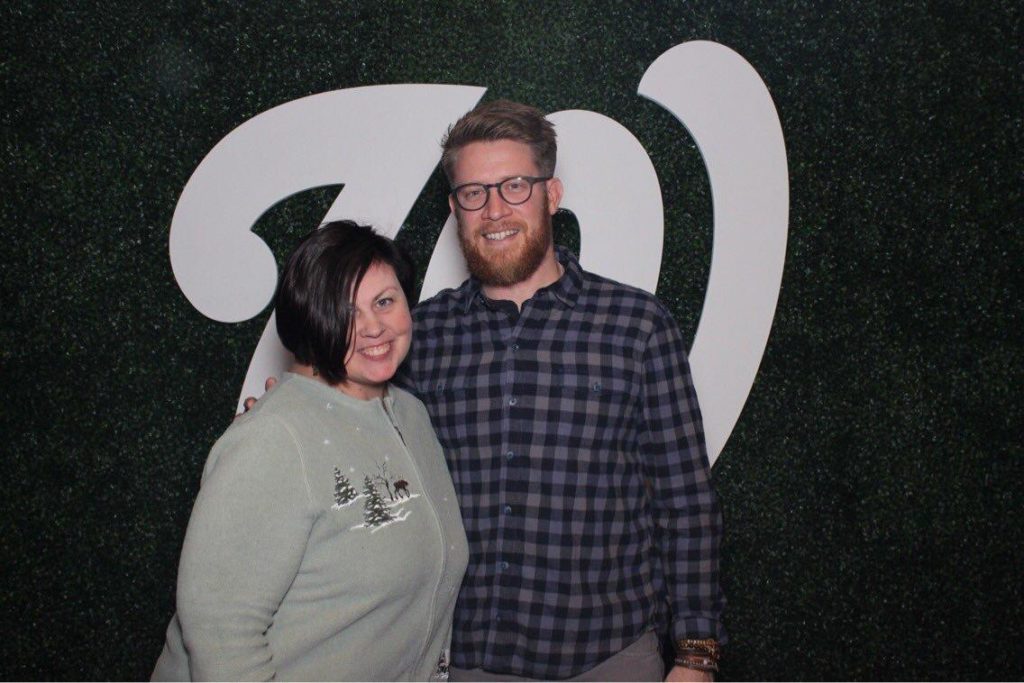I haven’t posted in a long, long time, and while I was away, I’ve lost the classic editor.
In the meantime, I’ve joined Mastodon.
Multimedia Storyteller and Digital Strategist
Brain noise, tunes and pics, and occasional insight from Helen Heath Mosher.
I haven’t posted in a long, long time, and while I was away, I’ve lost the classic editor.
In the meantime, I’ve joined Mastodon.
 Last night I was honored to be invited to the Nats Clubhouse Social, a gathering of folks whose social media and blogging presence help the Nationals get more visibility. I’ve run a fan page for Jayson Werth on FB for 7 years, and was lamenting to a couple of people that I wasn’t sure what my next Nats social persona was going to be now that Jayson’s moved on. Fortunately, Nats pitcher Sean Doolittle was having none of that, and I got to joke around with him and his wife Eireann a bit. Proud to be a Nationals fan, and excited to be starting a new baseball project (to be announced!). In the meantime, I’m sure I’ll be blogging about baseball here a bit more now.
Last night I was honored to be invited to the Nats Clubhouse Social, a gathering of folks whose social media and blogging presence help the Nationals get more visibility. I’ve run a fan page for Jayson Werth on FB for 7 years, and was lamenting to a couple of people that I wasn’t sure what my next Nats social persona was going to be now that Jayson’s moved on. Fortunately, Nats pitcher Sean Doolittle was having none of that, and I got to joke around with him and his wife Eireann a bit. Proud to be a Nationals fan, and excited to be starting a new baseball project (to be announced!). In the meantime, I’m sure I’ll be blogging about baseball here a bit more now.
People have often commented on how comfortable I am in speaking roles.
What most people don’t know is that I gave my first speech when I was 8 years old. I revisited this yesterday at Thanksgiving, spent with a friend. It turned out her dad had worked at the same place my dad had, though not at the same time.
In connecting these dots, I realized that one of the things that made me know what year my dad had left that organization was that it was the same year I had given my speech. In sharing this, I date myself. But it’s an important story. The speech I gave was about my dad.
You see, he has cerebral palsy, and that year he was working for the Commonwealth of Virginia in their office on developmental disabilities. There wasn’t an ADA back in those days, and my dad faced a lot of discrimination. So it was no small thing to be a rising fourth-grader, standing up in front of a conference of 300 people convening to talk about disabilities and tell them that my dad was awesome.
We cheered with him when the ADA was passed but we still have a long way to go with regard to seeing people for who they are rather than what condition or disability they have.
I’ve been working on getting my marketing chops back up to snuff as part of my “summer homework” and when I realized how much was out there, I started gobbling it all up! My current role doesn’t do much in the way of digital marketing so I thought it important to get back up to speed in case opportunities cross my path. But the lovely thing is that these tests are confirming to me that while these processes may have technologically evolved a bit since the last time I did this kind of work, the fundamental principles of marketing and even many of the methodologies are still very much important. This is the first of several online certifications I’m currently working on with a goal of achieving fluency in Google, Facebook/Instagram, and Hubspot after a few years away.
By Helen 7 Comments

[Originally published September 10, 2014] Content strategy has been a darling term — even a buzzphrase — of several converging fields of late, and as someone with an editorial background whose role danced across those fields in recent years, I’ve been watching curiously to see whether anyone could actually land on a good explanation of content strategy. The main problem with settling on a definition has been that many of the folks weighing in on it have been from marketing or technical writing, and focusing heavily on the audit/architecture components or the outcome/analytics components without really examining *strategy.*
But to my mind, overall content strategy is kinda like dealing with books–and I’m drawing a bit from my background as a former managing online editor, a library volunteer who contemplated getting an MLS and a retail bookstore manager for a chain that got blindsided by this whole internet thing and no longer exists.
Inventory and architecture are important if your focus is on being the librarian. Outcome and analytics are the primary focus of the bookseller. Neither will have anything to work with without decent writers and editors doing the creation, curation, and QA.
And the content strategist? The publisher. This is a person who can take stock of overall trends and knowledge of the marketplace, identify gaps between existing stuff and needed stuff, retire hackneyed and predictable pieces to the “reject” pile, and manage the workflow, the output, the talent needed to produce, market and organize the information.
It’s an imperfect metaphor, really. So is just about everything else I’ve seen about content strategy, but when you’re trying to get your arms around the concept it’s helpful to understand that there is a difference between architecture, analytics, and production. And all of these things are involved in the implementation of content strategy but none of them IS content strategy.
It’s this simple, folks. I’ve said it for years about every social media platform. Start with your goals. What do you want to achieve with your stakeholders? Once you know that, it’s about understanding the needed messaging on all channels to accomplish it, what to leverage where, how to do so effectively, and how to measure the effort and adjust as need be. Print, email, web, social, mobile. And whatever the next thing is.